The premise is simple: read one comic every day for the entire year. It seems like a simple task but there is no way that I read 365 comics last year, even if you count the individual issues in collections. So, this year, I am committing myself to this reading challenge, in the hope that I can broaden my reading habits and fully engage with my favorite hobby again.
This week I will mostly be reading X-Men related titles. After starting on the Endangered Species story-line last week I ended up pulling out a bunch of related titles. The best part of the X-Men comics is that they manage to tap into the pure superhero entertainment vibe while having something worthwhile to say about culture and make wider social statements.
I also noticed a problem, however, with a number of the titles that I pulled out. It is fair to say that over the years a number of creators have fallen out of favor due to their inappropriate and, sometimes, criminal behavior. A selection of writers who have written X-Men titles number among these and I do not want to be seen to promote their work. However, this does pose a dilemma when the work that they produced has cultural or historical significance to the comics I am reading and studying.
MFR ON YOUTUBE (latest video)
Help us reach 5K Subs!
In January 2013 USA Today published an article promoting a new X-Men title that would feature the first entirely female team. The main lead was Jubilee and the comic would feature A-list characters such as Storm, Kitty Pryde, and Rouge as central team members. This was a big, pivotal announcement for a franchise that has always featured strong female characters. Unfortunately for the comic, later in 2013 the writer was accused of sexual harassment and spreading malicious rumors. Although this did not end the comic’s run, the writer left on his own volition after 17 issues and was replaced by someone else. Later allegations, however, did put an end to his public comic book career.
What this means is that we are left with a significant entry into X-Men lore that has become difficult to discuss. Something similar is happening in the world of Harry Potter, where a new T.V. series has been announced but fans are torn between being excited for a new show based on their favorite books and supporting an author who has courted controversy with her public transgender statements. It is a difficult task to separate Art from the Artist, especially when the artist is still alive and creating.
Therefore, this week I may discuss comics produced by controversial creators but that does not mean that I endorse their actions. I would not recommend that anyone go out and buy the comics produced by these creators but they are still worth reading and, therefore, if you are interested, I would advise sourcing copies from friends or from a library.
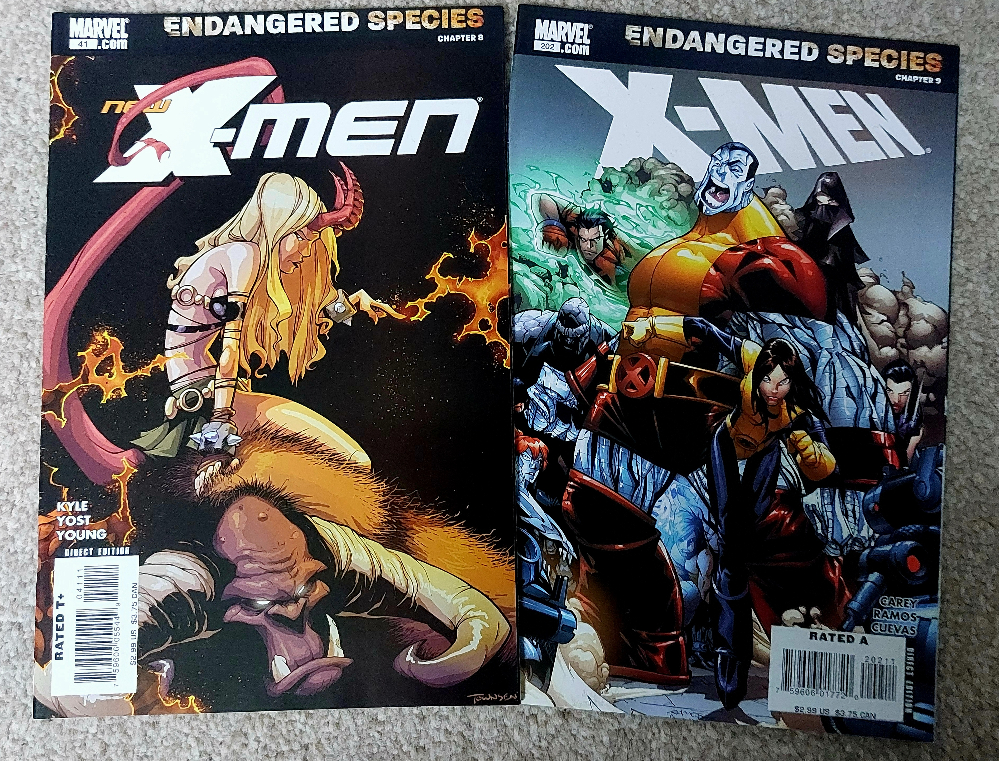
Comic Number 106: Endangered Species (various comics)
I’m still working my way through Endangered Species and the comics that the story features in. In chapters 6 through 8 the reader is exposed to places of torture and medical experiments thanks to Beasts uncomfortable truce with the Dark Beast. This combination of contrasting characters allows the creators to demonstrate the good and evil that can come from scientific experimentation. It also shows the reader how a character could have turned out if different choices had been made: it is a prime example of the road not taken. In his desire to save mutantkind, what lengths will Beast go to? In these chapters we get a glimpse into a potential outcome.
What is worth noting at this point is that out of the four titles, X-Men, Uncanny X-Men, New X-Men and X-Factor, I am only reading two of the main stories. I have stopped reading X-Men and New X-Men as I wasn’t enjoying either. I am still finding the Uncanny X-Men story, The Extremists, interesting but it is the X-Factor comic that I am enjoying the most. Perhaps because it has a more mature feel to the characters and the narrative, and less of the superheroics of the other comics. Or perhaps I’m just currently more in tune with Peter David and Pablo Raimondi’s work at present.
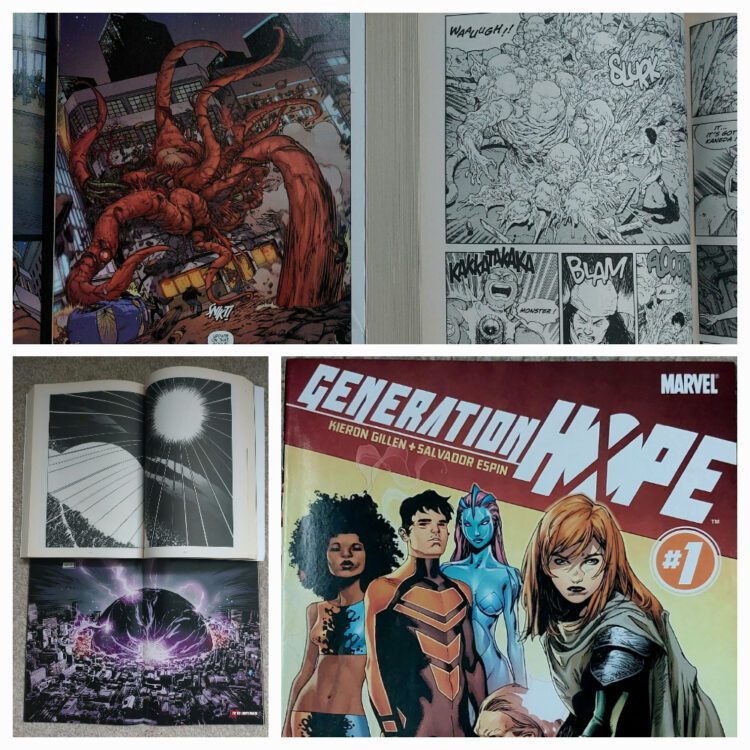
Comic Number 107: Generation Hope #1
A few years ago (by few I mean over a decade) I met a relatively new writer on the comic scene, Kieron Gillen. Journalist turned comics writer, he was an extremely approachable and friendly face in the crazy sea of a large comic convention which had some big hitters there signing and panels featuring the cast of Thor. Gillen was down to Earth and made an instant, positive, impression on me. So much so that I started to collect any comic that had his name on it. I have rarely been disappointed by one of his comics.
Generation Hope features the character Hope, the future of mutants, and a cast of new, teenage X-Men struggling in a world of hatred and fear. This first issue is, on the surface, standard X-Men fair but it does what Gillen does best; sets up the ongoing story.
The script is littered with quips, one liners, and in jokes but they are all matched to the characters that Salvador Espin is drawing. You can see the influence of past X-Men writers creeping into the narrative but the biggest influence has to be Manga, or more specifically, Akira. Surely Espin had a copy of Katsuhiro Otomo’s seminal work on his desk when drawing Generation Hope #1? Surely?
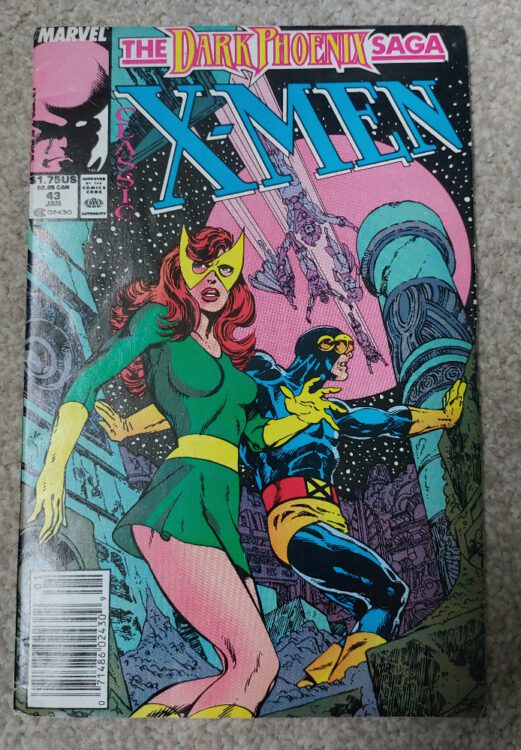
Comic Number 108: Classic X-Men #43
The end of the Dark Phoenix Saga (originally published in The Uncanny X-Men #137) has been reprinted a number of times; in collected editions; reprint editions (like this one); and even in alternative editions such as Phoenix: The Untold Story which includes the original ending Chris Claremont and John Bryne produced. Spoiler alert, this version has Phoenix dying at the end.
Chris Claremont, along with artists Dave Cockrum and John Byrne, revolutionized the X-Men, turned it into a franchise and laid the foundations that the comic is still building on today. As Marc Singer explains, they “turned an unpopular title into a fan favorite by focusing on complex (if melodramatic) characterization, long-running story lines, an elaborate continuity, and a diverse, multinational cast of heroes.” Not only did they turn the fledgling comic around around but they set “the tone for most mainstream superhero comics in the 1980s and beyond” (from Comic Studies: A Guidebook pg 218,219) If you talk about influential comic books or series, you can’t talk about the superhero genre without talking about Claremont and his 16 year run on the X-Men.
Rereading the end of the Dark Phoenix Saga, even just this final chapter, is still an emotional, thought provoking experience. The soap opera of the narrative hits all of the right spots, making it an emotional and entertaining roller-coaster. But there are also much larger concerns being discussed in the narrative. Whether they are there on purpose or just a lucky happenstance, the moralistic and ethical questions that the Dark Phoenix story line throws at the reader are complex. Jeff McLaughlin wrote an interesting essay on the philosophy of comics focusing on the X-Men entitled “The Triumph of the Human Spirit” in X-Men. I highly recommend reading it (it can be found in Comical Approaches to Comics published by Routledge) because it dissects elements of the comic and gives the reader potential new ways of reading superhero narratives. McLaughlin highlights that the “[d]ramatic struggles are not just about a battle of “us against them”, but also “us against ourselves”. Although this is especially relevant to the Dark Phoenix Saga, it is true of all the best X-Men stories and can be used to understand the superhero genre in general. Comics hold up a mirror to the real world and, even in the exaggerated fantasy worlds of the superhero, we can always find a part of ourselves in them. How we interpret the narratives and empathize with the characters is, in turn, a reflection on who we are.
Bringing it back to the comic in question, where do you fall in relation to the fate of the Phoenix? Did she deserve to die? Should Jean Gray pay for the crimes of the Phoenix force? Were the X-Men right to try and save her?
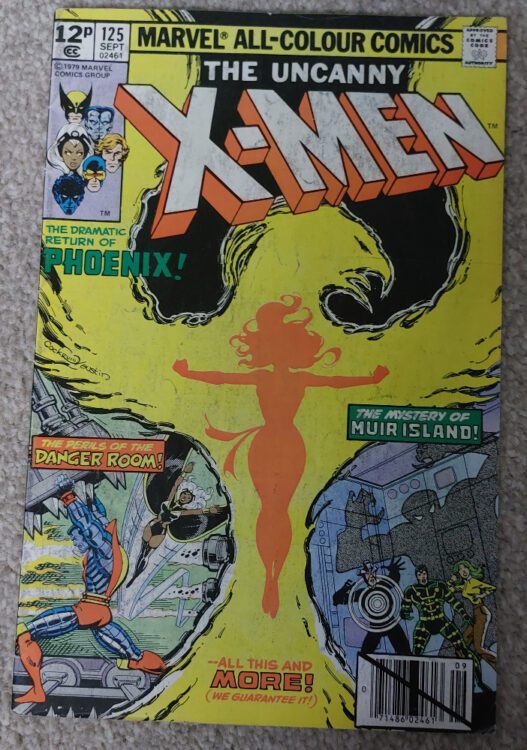
Comic Number 109: The Uncanny X-Men #125
Rolling back a few issues, issue #125 of The Uncanny X-Men is a wonderful example of Claremont’s storytelling abilities. The comic is technically set in the middle of a story; big things have happened in the issues leading up to this one and the road to the Dark Phoenix is only just beginning. And yet, this is still a comic worth reading by itself. The art work by John Byrne, with inking by Terry Austin, is beautiful. The characters are dynamic and each page has an energy, whether physical or emotional. And the coloring by Glynis Wein bleeds into the newsprint it is printed on. There is something to be said for reading the comics in their original printings.
There’s something Awful on Muir Island is probably what you would call a filler episode these days. The majority of it is taken up with the central characters going about their business, interacting in a very ordinary, day to day type way. There is a ‘threat’ in the story but even this seems mundane by superhero standards as it takes the form of a home invasion (obviously it has greater consequences later down the line). This issue illustrates why Claremont is such a good writer. The characters’ thoughts are laid out across the page and we as readers become immersed in this world. Claremont builds such strong emotional ties to the characters that he is able to create intense drama through small moments, such as Moira finding a gold tooth on the floor. Douglas Wolk sums it up best in his book All The Marvels, “Claremont mastered the storyteller’s greatest trick, Scheherazade’s imperative of making the audience need to find out what happens next”. It is difficult to just read one of Claremont’s X-men comics, you are always left wanting more.
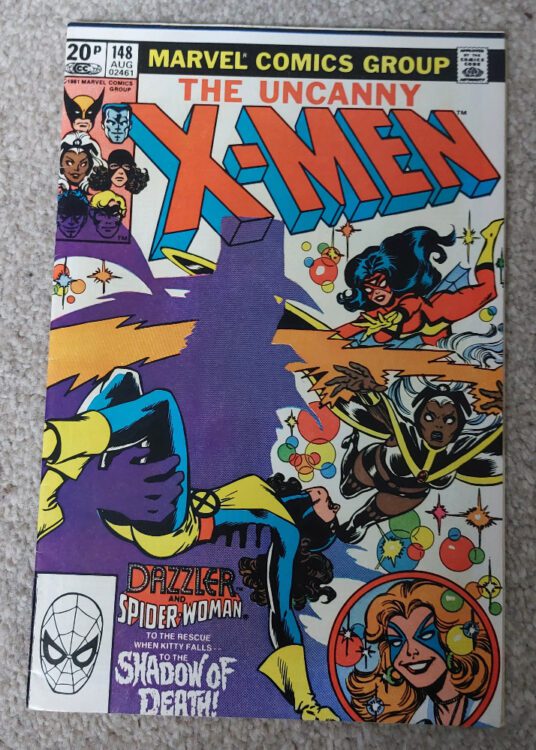
Comic Number 110: The Uncanny X-Men #148
I love the Cry, Mutant story. Similar to issue #125, it features several stories that are happening across the globe at the same time. On the one hand you have the kind of ridiculous, castaway love story with Cyclops and Aleytys Forrester who find themselves lost in an ancient city on a forgotten island in the middle of nowhere, wearing virtually no clothes because… reasons. Contrasting this is the confrontation at an inner city nightclub between the women of the X-Men and Caliban, in his first appearance. Claremont extends the mother/daughter dynamic between Ororo and Kitty while comparing their attitudes to those of Stevie Hunter and Jessica Drew. The concepts of over protection, jealousy, and the family, are all mixed into the ladies night out, even after it is interrupted by Caliban.
Caliban himself is an interesting character. Aware of his own appearance and deeply paranoid about how humans will react to him, he is constantly on the defensive, even in his personal mission to simply find a friend. His fear fueled actions lead to the revulsion and horror that created the fear in the first place. In this one issue, Claremont is able to give the Caliban a fully rounded character that readers can identify with, or at the very least empathize with. He is a tragic figure, desperate for friendship but can we forgive him for his harmful actions? There are the ethical questions, creeping in again.
Cry, Mutant, like many of the issues in Claremont’s run, has it all. Plus, Dazzler doing what Dazzler does best.
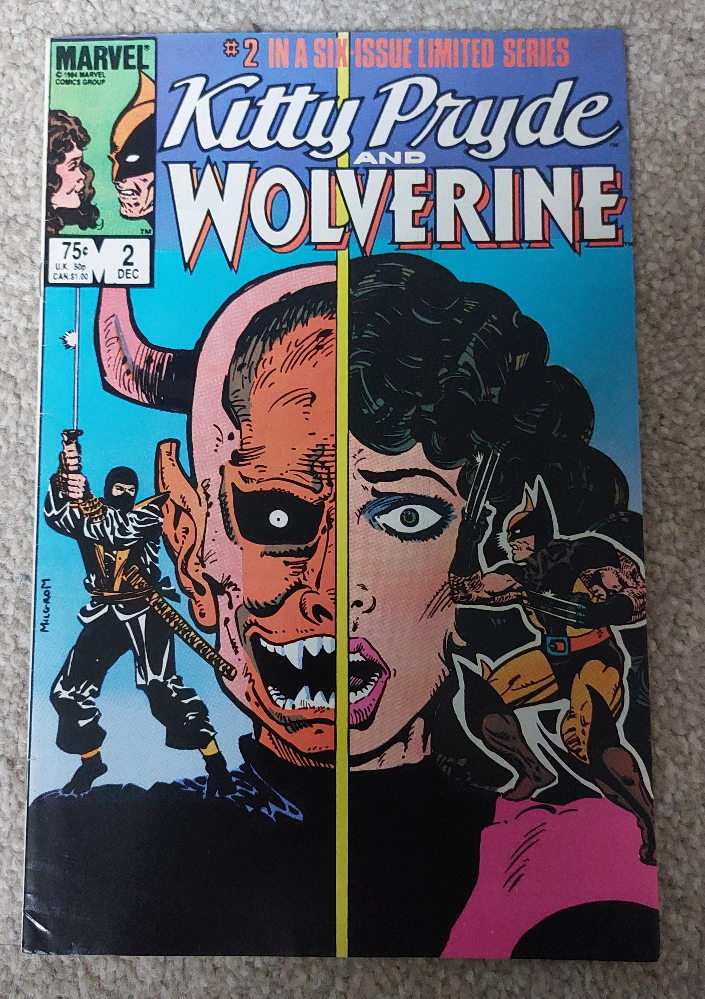
Comic Number 111: Kitty Pryde and Wolverine #2
Whenever a superhero comic becomes popular the publishers capitalize on its success by releasing tie-in titles. This is often affectionately referred to as a ‘family’ of comics and, as a publishing strategy, has its pros and cons. With Chris Claremont’s X-Men selling in its millions, Marvel obviously didn’t waste time expanding the X-Universe. A number of new comics appeared featuring new mutants, new teams of existing mutants, or titles featuring individual characters.
Wolverine quickly became one of the most popular characters, in fact based on his popularity today it’s difficult to imagine an X-Men without Logan. After appearing in his own 4 issue mini-series, which fleshed out his background and character, Logan was teamed with Kitty Pryde for a 6 issue limited series. The series exists because of the popularity of Wolverine and the fact that Kitty was one of Claremont’s personal favorites. He wrote the series in order to give Kitty more character and depth, beyond the innocent foil to the world weary X-Men. And by pairing her with Wolverine, the title was sure to be a success.
In essence, Kitty Pryde and Wolverine is a coming of age story. In issue 2 Kitty stumbles into a mob meeting where she finds her father, knee deep in gangsters. This leads to her being kidnapped, tortured, and brainwashed. The ending of the issue teases the readers with a fight to the death between the two titular characters. The entire issue is pure Claremont gold. It contains everything that you would associate with the writer. Long, internal monologues allow the reader to get inside the characters head and this helps to really explore the thoughts of Kitty as she struggles with her life as a mutant. This comic is about Kitty finding her place in the world as well as learning who she really is. A by product of teaming her with Wolverine, just to sell the comic, is that Wolverine also grows as a character and a bond is created between the two that is still present in modern X-Men comics.
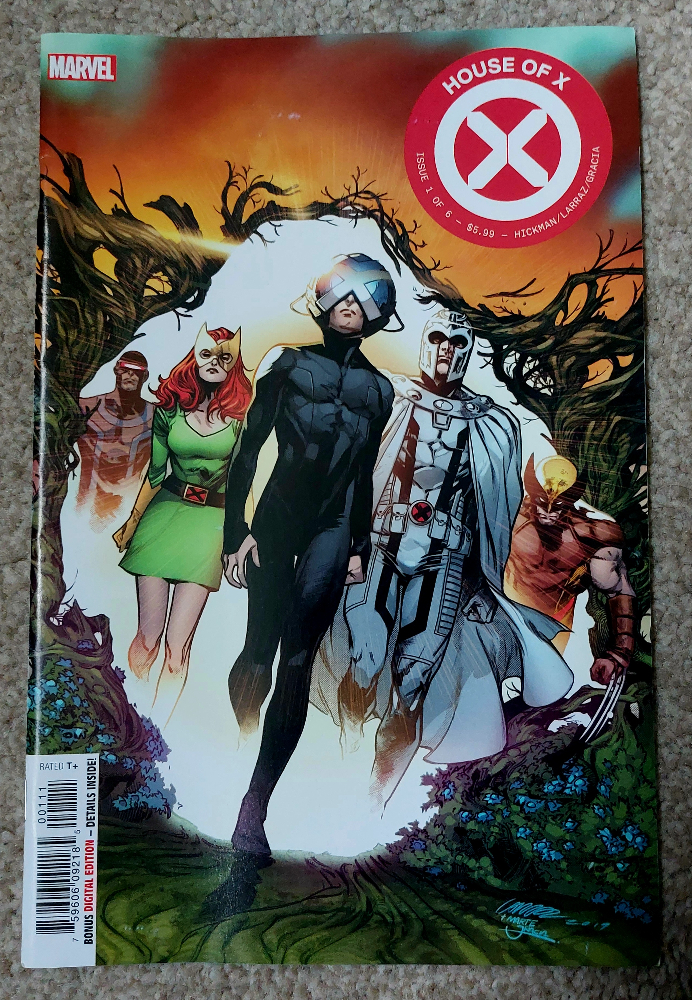
Comic Number 112: House of X #1
“Humans of the planet Earth. While you slept, the world changed.” (House of X #1)
In 2019 Marvel canceled all of its X-Men titles and re-launched the line with an ambitious new project starting with House of X and Powers of X. The 12 issue, bi-weekly, interconnected series was the launching pad for a string of new X-Men titles with a diverse array of characters and creators. Overseeing this re-launch, and writing the main titles, was Johnathan Hickman, one of the best writers working in comics today. It was all very exciting.
House of X#1 sets the scene brilliantly and introduces the characters to the readers as if they were brand new. Hickman packs so much character into this first issue that you get a great understanding of many of the lead roles but also their standing within the greater Marvel Comic Universe. If you had never read an X-Men comic before, you could start with House of X and not feel left behind. Hickman is very good at writing comics for new readers and his run on Fantastic Four and Avengers are the only runs I have kept of those titles as they are so self contained.
One of the highlights of the series is how Hickman used a superhero cliche and turned it into an important plot point that had ramifications throughout the X-Men titles. There used to be a saying in superhero comics that ‘only Bucky stays dead’ but this itself has proven untrue. The death of any superhero character is no longer dramatic because the cynical reader knows it will never last. Hickman ‘killed’ Johnny Storm in his Fantastic Four run but it was never meant to last and readers weren’t meant to believe it. The purpose of the death served the narrative, affecting the other members of the superhero family and their actions. In the X-Men, Hickman introduces the mutant resurrection, thus making the concept of death less of a threat and, ironically, making the threat of death for other characters more impactful. Hickman deals with ideas of mortality as well as morality and combines these to raise the question: are Mutants the new Gods?
Unfortunately for me, the X-Men run suffers from multiple crossovers and too many tie-ins. When the new titles started to appear I kept up with each one for about 6 issues but then it became difficult to keep up with them all. I just couldn’t afford it. I ended up collecting just the Hickman written X-Men title but, despite owning all of his run, I have never read past the Sword of X crossover.
One day maybe.
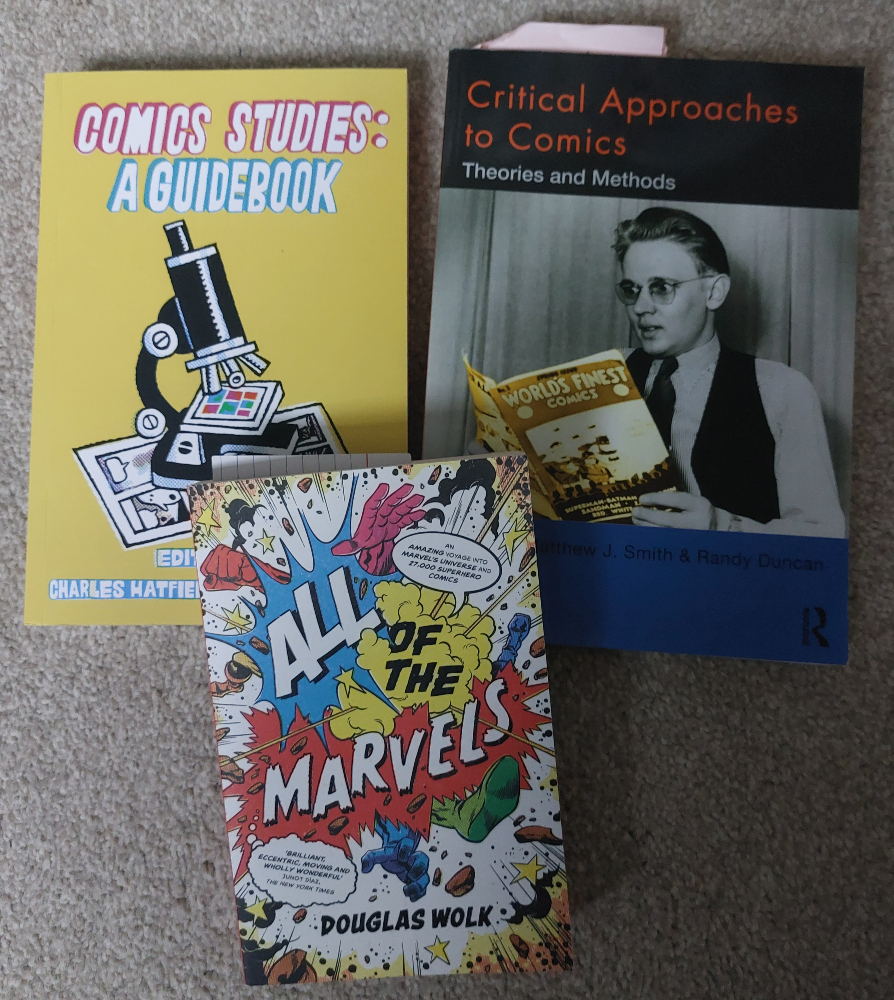
In the introduction to this week I mentioned problematic and disgraced creators. You may have noticed that I have not covered any comics by these creators this week. I have on my bedside table a stack of X-Men comics that I was going to read this week but instead, as the week went on, I decided to focus on the positives in the X-Men comics. Despite the trials that the characters have to face time and time again, there is a lot of positivity in the pages of the X-Men comics. Instead of reading certain comics, I read a collection of essays from numerous books, all of which I recommend if you want to begin to understand the history and psychology behind the X-Men. These books are:
All the Marvels by Douglas Wolk
Comics Studies: A Guidebook Edited by Charles Hatfield & Bart Beaty
Critical Approaches to Comics Edited by Matthew J. Smith & Randy Duncan

